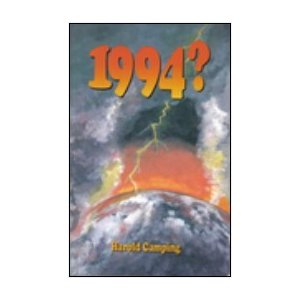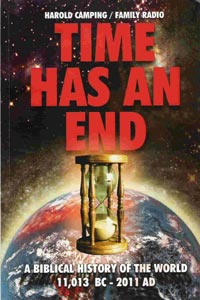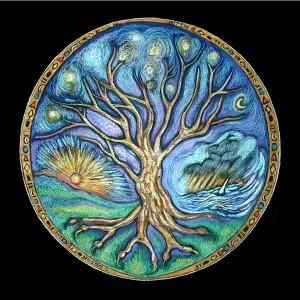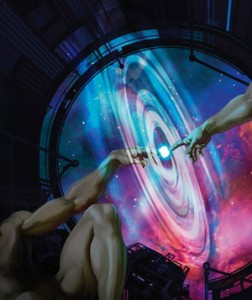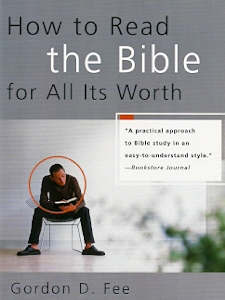 Even though I do not agree with all of the author’s opinions, I wish all Christians would read this book. It should be required reading for all apologists and Bible teachers. The purpose of the book is to make the reader a better bible interpreter. It begins appropriately by establishing its need. While admitting that scholars can obfuscate the plain meaning of a text in their ambition to be unique, the nature of the reader and the biblical text makes an exclusive emphasis on plain reading somewhat naïve. Whether or not one is aware of it, all readers are interpreters. Because comprehending God’s word is paramount, one should aspire to sound methods. The myriad of contrary theological positions, which all claim to be based on the clear meaning of scripture, shows the need for a book like this. Even more, it exposes flagrant abuses like the Mormon’s baptism of the dead based on1 Corinthians 15:29 and the disingenuous “contradictions” derived by skeptics. Not all interpretations are valid and the book helps the reader understand why some are better. It is important that the reader understand the nature of Bible as ancient literature and God’s word.
Even though I do not agree with all of the author’s opinions, I wish all Christians would read this book. It should be required reading for all apologists and Bible teachers. The purpose of the book is to make the reader a better bible interpreter. It begins appropriately by establishing its need. While admitting that scholars can obfuscate the plain meaning of a text in their ambition to be unique, the nature of the reader and the biblical text makes an exclusive emphasis on plain reading somewhat naïve. Whether or not one is aware of it, all readers are interpreters. Because comprehending God’s word is paramount, one should aspire to sound methods. The myriad of contrary theological positions, which all claim to be based on the clear meaning of scripture, shows the need for a book like this. Even more, it exposes flagrant abuses like the Mormon’s baptism of the dead based on1 Corinthians 15:29 and the disingenuous “contradictions” derived by skeptics. Not all interpretations are valid and the book helps the reader understand why some are better. It is important that the reader understand the nature of Bible as ancient literature and God’s word.
The Bible was written for everyone but it was not written to everyone. The authors had a particular audience in mind. Fee and Stuart argue, “Interpretation of the Bible is demanded by the ‘tension’ that exists between its eternal relevance and its historical particularity.”[1] In other words, it is a divine revelation and a human communication simultaneously. An overemphasis on either can lead to error. One must first seek to understand the meaning for the original reader through exegesis and then use sound hermeneutic methodology to ascertain its contemporary significance. The book commends the reader to learn to think exegetically as a matter of first principles.
The second chapter argues that the best tool is a good translation. Accordingly, it focuses on textual and linguistic translation issues. Textual issues are concerned with determining the original text and linguistic focus on one’s theory of translation.[2] The science of textual criticism is discussed and examples of textual variants are shown. Theories of translation vary from formal (KJV,NASB) to functional equivalence (NIV, NLT) with the former denoting literal rendering and the latter being idea centered. Again, this is best understood by example, like literal “coals of fire” (Ro 12:20 KJV) which is awkward in the English better rendered as “burning coals” (NIV).[3] The section headed “Some Problem Areas” reveals that no translation is perfect. Accordingly, one should reference many translations for serious Bible study. The authors recommend a dynamic translation like TNIV or NRSV as one’s main choice while referring to both ends of the spectrum (NASB vs. NLT) as secondary sources. This seems wise. I favor the ESV as my main translation because it is in the middle of the spectrum leaning toward formal equivalence. A primary task of the interpreter is to differentiate by genre. In view of that, the book begins with the genre of Epistle.
The main idea of chapter three is to think contextually and to follow the author’s argument in textual units. The book uses 1 Corinthians as an example and begins with the process of determining the historical context. It emphasizes reading the letter all the way through and rereading it several times. In addition, one might also listen to audio Bible. An important concept is digesting units of thought in the argument. The book accentuates “THINK PARAGRAPHS.”[4] In apologetics, this practice alone resolves most skeptical objections. Also on the epistles, chapter four looks at the broader sense of hermeneutics, a much less exact science than exegesis.
The principle issue in interpreting epistles, cultural relativity, is concerned with determining what should be relegated to the first century as opposed to transcendent truth. A discussion on preunderstanding and theological tradition concludes that often believers seek “how to get around” problematic text in lieu of comprehending the author’s intent.[5] The basic rule is reiterated, “A text cannot mean what it never could have meant to its author or his or her readers.”[6] The second basic rule is that when we share the same basic situation as the original audience the message for us is also the same. While it is tricky to extend application when the particulars are similar, it is more difficult to handle passages where they are divergent. Careful exegesis can reveal an underlying principle that in “genuinely comparable situations,” may extended to contemporary application.[7] Finally, the occasional nature of the epistles can make deriving theology difficult. One must resist the urge to extrapolate too far from the original intent. While the epistles make up a good portion of the New Testament, over forty percent of the Old Testament is narrative.
The fifth chapter handles narrative, which is God’s story based on historical events. Biblical narrative is a story with timeless significance for the lives of all readers. The book lays out three levels of narrative. The top level is the metanarrative, which encompasses the big picture of redemptive history from creation to the eschaton. The second level encompasses God redeeming humanity through the major covenants. The first level is the individual stories themselves consisting of characters, plot, and plot resolution. Three caveats are expressed in that they are not: 1) allegories full of hidden meaning; 2) intended to teach moral lessons; but 3) they do teach implicitly what is explicit elsewhere.[8] The literary characteristics of Hebrew narrative are discussed with the reminder that the ultimate character in them all is God. The Book of Ruth is interpreted in way of example. The chapter closes soberly with a thorough list of common errors and ten principles for sound interpretation. These principles apply to the next chapter as well.
Everything taught in the previous chapter is germane to Acts but Acts has more immediate relevance for the church. Because it is a source of doctrine, the main purpose of the sixth chapter is to offer hermeneutical suggestions on the issue of biblical precedent.[9] The authors suggest that the book is divided into six panels delineated by short summary statements (6:7; 9:31; 12:24; 16:4; 19:20).[10] They briefly discuss each panel concluding that overall thrust is the expansion of the church into the Gentile world through the power of the Holy Spirit. Contrary to the way many theologians employ 6:1-7 as a model for deacons, the book suggests that functions, “to set the scene for the first expansion of the church outside its Jerusalem base.”[11] In fact, they discourage the idea to find normative principles in Acts. It is a matter of what the text intended to teach. Although many caveats are proffered, the chapter concludes with three hermeneutical principles: 1) it is usually not valid to use an analogy based on biblical precedent as biblical authority for contemporary practice; 2) biblical narratives do have value as illustrative patterns; 3) these precedents can be seen are repeatable patterns even if they are not normative.[12] These suggestions represent a formidable challenge to much of traditional ecclesiology.
The Gospels are a unique genre characterized by layers of context. Because they were written decades after the events they record, they are two level documents in that one must consider the historical context of Jesus and of each of the four authors. The context of Jesus can be assimilated by studying first century Judaism in Israel. The context of the evangelist author speaks to why he selected arranged and adapted material. The reader is asked to “think horizontally” meaning to read each pericope with awareness of the parallels.[13] They also recommend that one “think vertically” which means to be conscious of historical contexts, that of Jesus and the author. A final caveat if offered in that the straightforward two ages eschatology expected by the Jews has been supplanted by a much more nuanced “already but not yet” kingdom eschatology. Chapter eight explains interpretation of Jesus’ parables. The central idea is that parables were designed to drive home one main point by calling forth a response. Jesus’ parables were also vehicles to proclaim the kingdom.
Chapters nine and ten deal with the Law and the Prophets respectively. The purpose is to help one understand the nature and role of the law in Israel so that one can ask the right questions about how it might apply under the new covenant. God’s law for Israel was the terms of a contractually binding suzerain vassal relationship. For this reason, the Old Testament is not our testament and the civil and ritual laws, which enforce public conduct and religious practice, have not been renewed. While Jesus renewed portions of the ethical code and even raised the bar (Mt 5:21-48), only the explicitly renewed apply today. The chapter concludes with six helpful dos and don’ts. It is by understanding the law as covenant stipulations that the role of the prophet comes into focus.
The prophets served mainly as spokespersons for God and enforcers of the covenant. The books of the prophets were collections of spoken oracles mostly spoken in poetry and not always presented in their original chronological sequence. Because the historical distance is great, the authors recommend one read a Bible dictionary prior to any work on the prophetic books. There are two levels of historic context to consider the larger context of the prophet in Israelite history and the specific context of the particular oracle. Like the admonition to think paragraphs in the epistles, the idea here is to “THINK ORACLES.”[14] The forms of oracles, the lawsuit, the woe, the promise, the enactment prophecy, and the messenger speech also tell the exegete a great deal about their purpose. The prophets also frequently employed a stylized poetry featuring parallelism. A feature also found in the Psalms.
Psalms are complicated for the interpreter because that they often prayers to God in an ancient context yet also God’s word for us in scripture. Hebrew poetry is drenched in emotional language speaking to the heart. Synonymous parallelism is a common device, which elaborates on idea in repeated textual units. They are often musical and intentionally metaphorical. There are seven categories of Psalms: 1) laments; 2) thanksgiving; 3) hymns of praise; 4) salvation history psalms; 5) celebration and affirmation; 6) wisdom; 7) songs of trust. Each has a formal structure and a function in Israelite culture. While each has integrity as unit, there are various patterns and devices within. For instance, Psalm 119 is an acrostic where each letter of the Hebrew alphabet begins an eight-verse structure. The chapter ends with a sobering caveat, “the psalms do not guarantee a pleasant life.”[15] While they offer encouragement, they are not necessarily normative. In that regard, the wisdom literature is similar.
Proverbs, Job, Song of Songs and Ecclesiastes are known as the wisdom books. The purpose of the twelfth chapter is to discuss what wisdom literature is and is not because it is a frequently abused and misunderstood genre. Wisdom is more a matter of right position with God than intelligence. The chapter gives background to the wisdom tradition and then focuses specifically on Proverbs. Summary guidelines are offered. Job’s central message is that “what happens in life does not always happen either because God desires it or because it is fair.”[16] Ecclesiastes has a similar idea although it is even more difficult to discern. Song of Songs is a love song with a history of being allegorized. Fortunately, ancient near eastern studies have come a long way in correcting that state affairs. The imperative rule is to never take verses out of context and assign them meanings never intended. For instance, should one obey the command “Curse God and die” (Job 2:9) just because it is in the Bible? Even with the inherent pitfalls of the wisdom genre, the apocalyptic genre is probably the most difficult and controversial.
Revelation is complex in many ways. Even its genre is multifaceted, a combination of apocalypse, prophecy, and letter.[17] Of the three, it is primarily the former. Five characteristics of apocalypses are discussed: 1) its dependence on Old Testament prophetic literature; 2) as a form of visionary literature; 3) its imagery is more fantasy than reality; 4) as a formally stylized literary genre. Revelation is prophecy in the sense of the already/not yet paradigm in which John was speaking for God. It is an epistle in that it contained seven letters to seven actual churches. They state the main theme as, “The church and the state are on a collision course; and initial victory will appear to belong to the state.”[18] Because of its unique genre, the authors guide the reader through the entire book. The interpretation is largely presented from a preterist perspective yet they acknowledge, “the pictures of 11:15–19 and 19:1–22:21 are entirely eschatological in their presentation.”[19] There is value in understanding their point of view.
Critical Analysis
The book is exceedingly valuable in teaching the exegetical method. If this were required reading for all Christians, then much nonsense and heresy might be avoided. The major strength is in teaching the student to think in terms of main ideas and blocks of text rather than isolated individual verses. The answer to 90% of skeptical objections and alleged bible contradictions can likely be found by following the advice in this book. Another essential concept is that a text usually cannot mean something the author or his readers could not have known. Even though I disagree some of their views on prophecy, I would recommend this book to any thinking Christian.
While strength of the book was the author’s courage to address controversial issues, at times the tone was a little superior. Many people who are not scholars study the Bible and this tendency toward elitism is problematic. For the most part, the authors are charitable but a few minor instances stood out. For instance, they criticize evangelicals for inconsistency in applying the cultural relativity principle:
Without articulating it in precisely this way, twenty-first-century evangelicals use this principle to leave “a little wine for thy stomach’s sake” in the first century, to not insist on head coverings or long hair for women today, and to not practice the “holy kiss.” Many of the same evangelicals, however, wince when a woman’s teaching in the church (when men are present) is also defended on these grounds, and they become downright indignant when someone tries to defend same-sex partnerships on the same grounds.[20]
The last example seems completely out of place since the misuse of cultural relativity to defend sin does not make dissenters inconsistent. I hope the authors are indignant as well! Same-sex partnerships are against God’s creation order and not relative to culture. Fortunately, they argue this point a few pages later, “there seem to be no valid grounds for seeing it [same sex relations] as a culturally relative matter.”[21] So one wonders why it was included in their criticism of twenty-first century evangelicals.
This book is transformative to one’s thinking on inerrancy and apologetics with the Gospels. The solution for many difficulties lies in grasping the layers of context. Where one could try to explain away every chronological consistency with a wooden understanding of inspiration, it is more helpful to address the genre of writing. The intention of the genre was never to provide an absolute chronology. Each Gospel author had particular reasons for arranging the material about Jesus in the way that he did. He was addressing a situation in his locality. Hence, the Gospel genre is not a strictly historical one and one should not expect strict chronology. Even so, this can be taken too far.
While reading horizontally and vertically is immensely helpful, perhaps not everything should be explained by genre. For instance, the authors explain the various iterations of Jesus’ sayings in this way:
It should not surprise us, therefore, to learn that many such sayings (without contexts) were available to the evangelists, and that it was the evangelists themselves, under their own guidance of the Spirit, who put the sayings in their present contexts. This is one of the reasons we often find the same saying or teaching in different contexts in the four gospels—and also why sayings with similar themes or the same subject matter are often grouped in a topical way.[22]
While acknowledging that this explains many instances, it also seems fair to argue that because Jesus was a traveling preacher, he repeated his material in each location he visited. That likely being the case, one would expect his sayings to be used in various contexts in historical actuality as well as merely a later literary construction.
The author’s conflation of Mark 13, Matthew 24 and Luke 21 also seems dubious.[23] While Mark and Matthew certainly share material, Luke represents a different teaching. While it is hard to determine if this was the evangelist author’s context or Jesus’, the text supports the latter for three reasons. First, Matthew’s discourse was private to disciples on the Mount of Olives (Mt 24:3), whereas Luke’s was a public teaching at the temple (Lk 21:1). Second, Jesus makes them distinct temporally. In both Matthew and Luke, he lists a series of birth pains (Mt 24:6-8 c.f. Lk 21:10-12). However, Matthew follows the list with “Then (after) they will deliver…” (v.9) but Luke follows the birth pains with “But before all of this…” (v.12). Accordingly, the instructions in Luke are prior to the birth pains ( e.g. A.D. 70) directed to contemporary Christians in Jerusalem whereas Matthew’s instructions are for after the birth pains, arguably still future. Third, in Luke, the instruction is to flee Jerusalem when armies surround it. Yet, in Matthew and Mark, the instruction is to flee when the abomination of desolation takes place. It seems that careful exegesis leads to the conclusion that Luke is not the private Olivet discourse concerning the Parousia rather a similar yet distinct public warning for first century Christians. This accounts for preterism as well as futurism.
While it can be agreed that there is a tendency to abuse typology in some circles, skepticism seems in order concerning the book’s statistics concerning Old Testament prophecy. The authors claim, “Less than 2 percent of Old Testament prophecy is messianic. Less than 5 percent specifically describes the new-covenant age. Less than 1 percent concerns events yet to come in our time.”[24] It is beyond the scope of this review to offer alternate figures but there seems to be a lot of prophetic material concerning the “day of the Lord” (Joe 1:15; 2:1, 11, 31; 3:14; Isa. 13:6, 9; Jer. 46:10; Eze. 13:5; 30:3; Am 5:18–20; Oba. 15; Zep. 1:7, 14; Mal. 4:5) and messianic kingdom which is yet future. It seems fair to wonder if perhaps the statistician’s eschatology influences their interpretation of the data making it a circular argument. Furthermore, when it comes to prophecy, the author did not always understand what he wrote (Dan 8:27; 12:8). Fee and Stuart do not allow for this. For example, they argue Ezekiel 37 was “predicted metaphorically with eschatological language as though it were an end-time event.”[25] This “as though…” seems more like special pleading than exegesis. One wonders why it must be a metaphor. In light of all this, it is hardly surprising to see preterism advocated for the Apocalypse. It seems the author’s presuppositions and preunderstandings demand it.
Conclusion
This review offered a summary and analysis of How to Read the Bible for All its Worth by Gordon Fee and Douglas Stuart. In offering a summary, the paper sought to illustrate the value of the book by showing how it teaches accurate interpretation. A central idea is to think in paragraphs rather than verses to ascertain the larger context. Another central theme is that a text usually cannot mean what it could not have meant to its author and readers. If universally studied, many heretical notions would be preempted and most skeptical objections answered. It should be required reading for apologists and theologians. While criticism was offered that the author’s eschatological leanings are biased toward a particular school of thought, their point of view was for the most part logical. In the end, it seems that these points support the idea that this book has great value for all serious Bible readers. Ideally, that would include all Christians.
[1] Gordon D. Fee and Douglas K. Stuart, How to Read the Bible for All Its Worth, 3rd ed. (Grand Rapids, MI: Zondervan Publishing House, 1993), 21.
[2] Ibid, 35.
[3] Ibid, 42.
[4] Ibid, 64.
[5] Ibid, 74.
[6] Ibid, 74.
[7] Ibid, 78.
[8] Ibid, 92.
[9] Ibid, 108.
[10] Ibid, 111.
[11] Ibid, 115.
[12] Ibid, 123.
[13] Ibid, 135.
[14] Ibid, 193.
[15] Ibid, 223.
[16] Ibid, 241.
[17]Ibid, 250.
[18] Ibid, 258.
[19] Ibid, 264.
[20] Ibid, 80.
[21] Ibid, 86.
[22] Ibid, 132.
[25] Ibid, 201.

